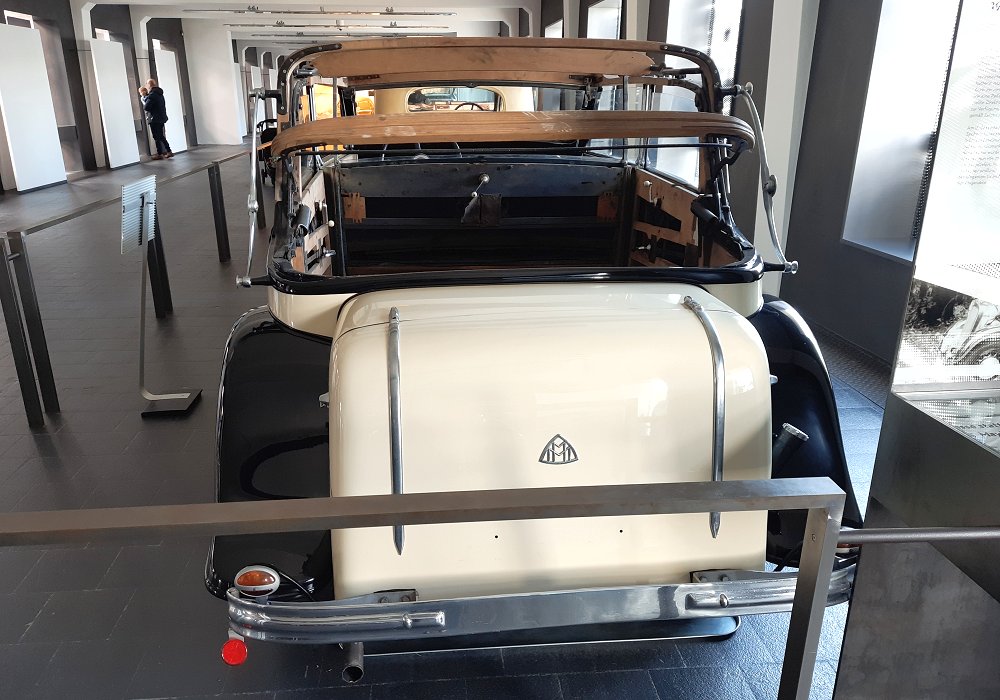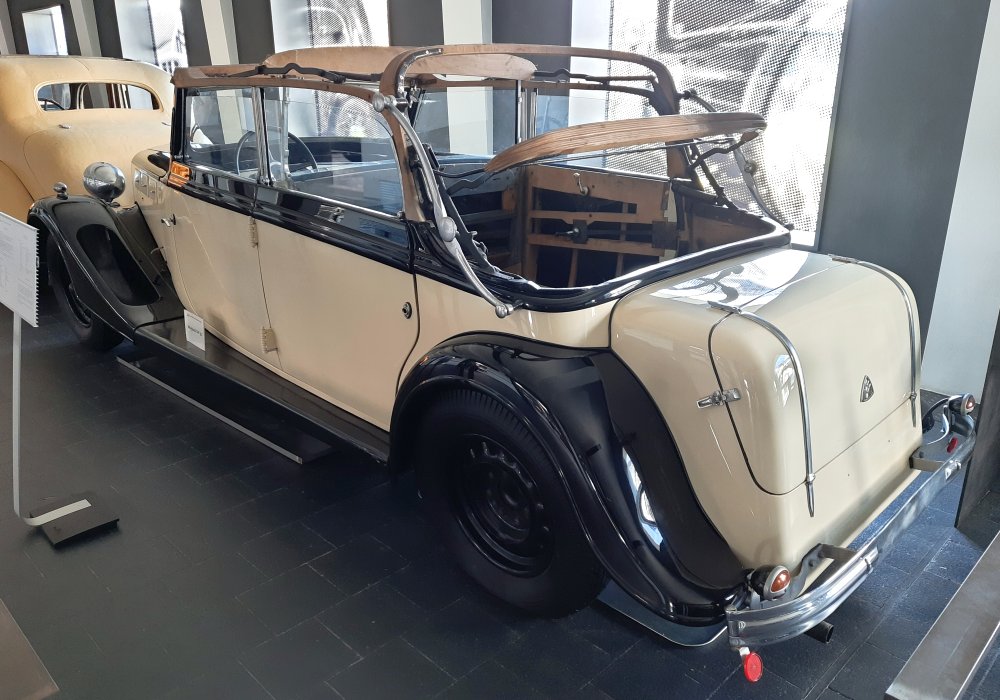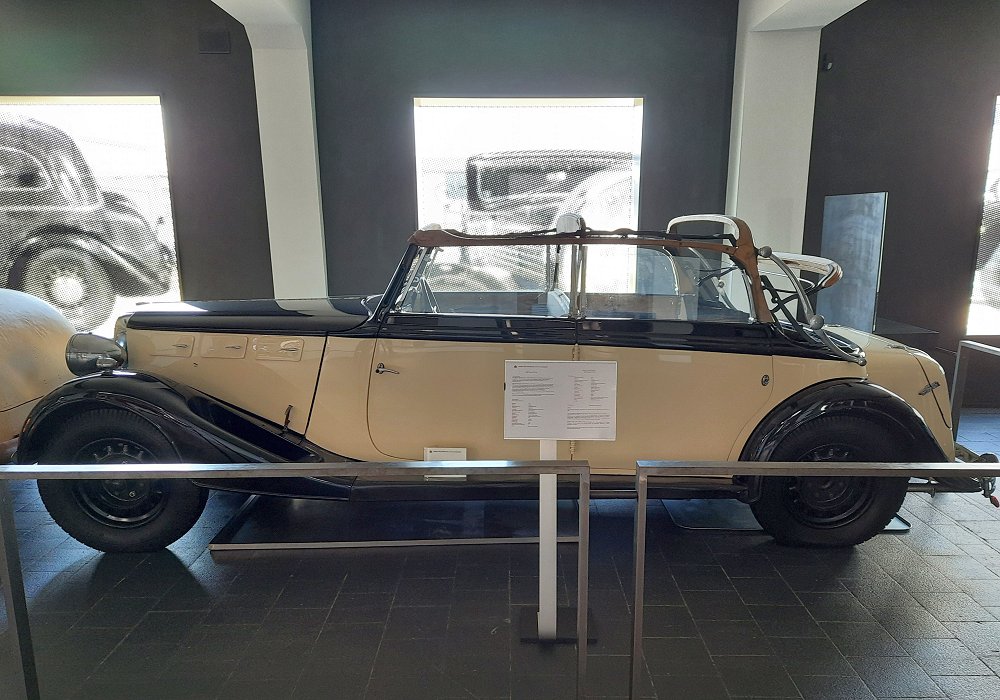Description
The Maybach SW 35 Pullman-Cabriolet by Spohn was one of the most distinguished and luxurious expressions of Maybach’s first generation of independent-suspension cars. Built in the mid-1930s on the sophisticated SW 35 chassis, the Pullman-Cabriolet combined advanced engineering with one of the grandest body styles available: a full four-door convertible designed for stately travel, formal occasions and chauffeur-driven elegance. Coachbuilt by Joseph Neuss Spohn of Ravensburg, a workshop renowned for its exquisite craftsmanship and strong relationship with Maybach, it represented the pinnacle of German luxury motoring just before the Second World War.
The foundation of the car was the SW 35 chassis, introduced in 1935. This platform marked a major technical leap for Maybach, introducing independent rear suspension and a compact but powerful 3.5-litre supercharged straight-six engine. While smaller than the giant seven-litre engines of the earlier W-series cars, the SW powerplant was far more advanced. Equipped with a Roots-type supercharger that engaged via a clutch mechanism, it delivered around 140–150 horsepower — remarkable for a mid-sized luxury car of its day. The engine was famed for its velvety smoothness, quiet operation and broad torque delivery, making it ideal for moving the large, imposing Pullman-Cabriolet with effortless authority.
The chassis’s most significant feature was its Schwingachse, or swing-axle independent rear suspension. Combined with independent front suspension and carefully tuned long-travel springs, it gave the SW 35 a level of ride comfort and stability that rivalled or exceeded anything from Horch, Mercedes-Benz or even Rolls-Royce of the same period. The handling was unusually composed for such a large vehicle, reinforcing Maybach’s reputation for building technologically advanced automobiles rather than simply luxurious ones.
Transmission was handled by Maybach’s semi-automatic preselector system paired with a torque-multiplying converter. This allowed smooth, almost seamless gear changes without the need for a clutch pedal in most situations, providing the sort of refined driving experience expected in a premier chauffeur-driven motorcar. It made the SW 35 Pullman-Cabriolet particularly well suited to town use as well as long-distance touring, with the engine and transmission working together to deliver quiet, unhurried performance.
Spohn’s Pullman-Cabriolet bodywork was the crowning piece of the design. Spohn was Maybach’s preferred coachbuilder, celebrated for its deep understanding of the marque’s chassis and mechanical layout. For the Pullman-Cabriolet, Spohn crafted a large, imposing four-door convertible with an extended wheelbase, tall roofline and superbly detailed body panels. The proportions emphasised elegance and presence, with long flowing fenders, balanced door lines, and a sweeping fabric roof that folded neatly into a well-finished compartment behind the rear seats.
The interior was designed to represent the very highest level of pre-war German craftsmanship. As a true Pullman-class vehicle, the primary focus was on the rear compartment. Passengers were seated on deep, richly upholstered benches or individual armchairs trimmed in the finest leather or cloth. The cabin featured polished hardwood veneers, chromed fittings, refined switchgear, footrests, fold-out tables, interior lighting arrangements and, often, a division window separating the chauffeur from the occupants. Luxury touches such as smoking sets, storage compartments and precision-made instrumentation were common. Every example was hand-specified to the owner’s requirements, making each car a unique creation.
On the road, the SW 35 Pullman-Cabriolet Spohn offered a driving experience unmatched in its class. The combination of the supercharged straight-six engine, preselector transmission and independent suspension gave it a smoothness, flexibility and quietness that felt decades ahead of its time. Despite its size, the chassis provided excellent stability at higher speeds, and the car’s ability to maintain rapid, unstrained cruising made it ideal for long, prestigious journeys.
Production numbers were extremely low. The SW-series cars were expensive even before a custom body was commissioned, and a Pullman-Cabriolet from Spohn sat at the very top of the price spectrum. This exclusivity means that surviving examples are exceptionally rare today, each representing one of the finest expressions of European luxury motor-car construction in the 1930s.
The Maybach SW 35 Pullman-Cabriolet Spohn stands as one of the most majestic pre-war German automobiles. It embodies the peak of Maybach’s craftsmanship, combining technical sophistication with a level of elegance and bespoke artistry that only a handful of cars of the era could rival. As a rolling symbol of Weimar- and early-Nazi-era prestige, it remains a museum-grade artifact of automotive history and one of the most impressive vehicles ever to carry the Maybach name.




